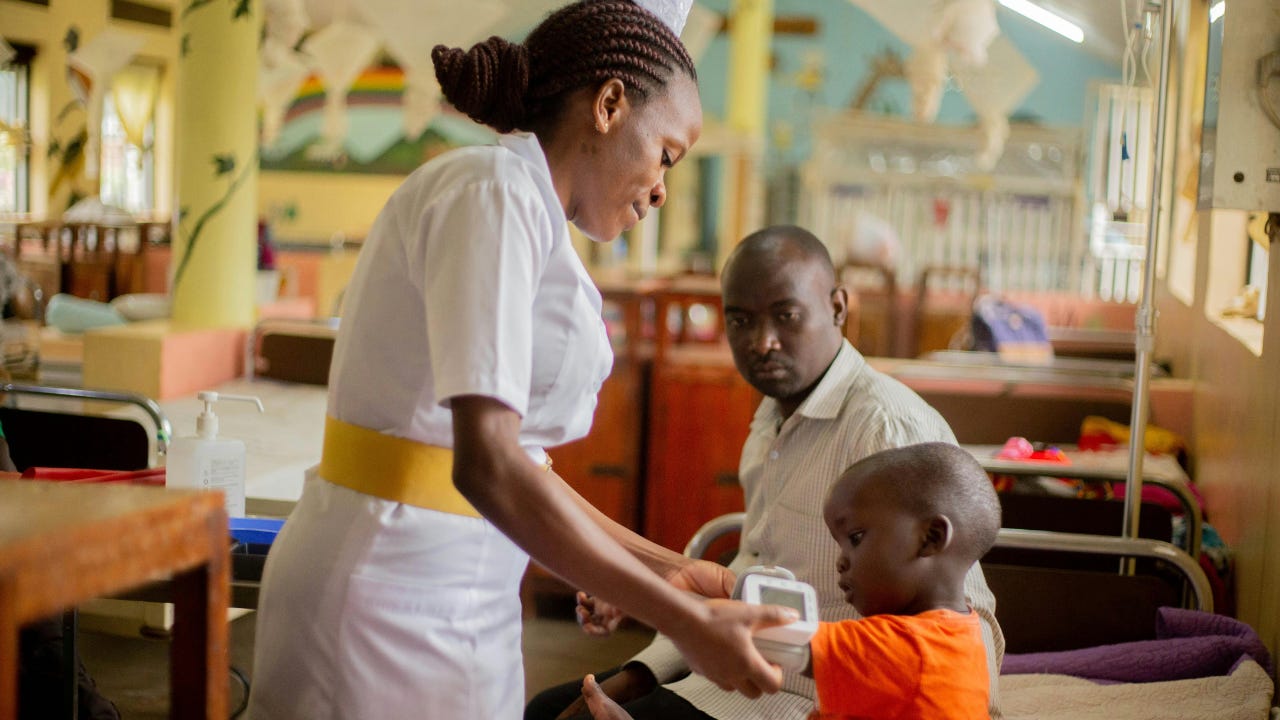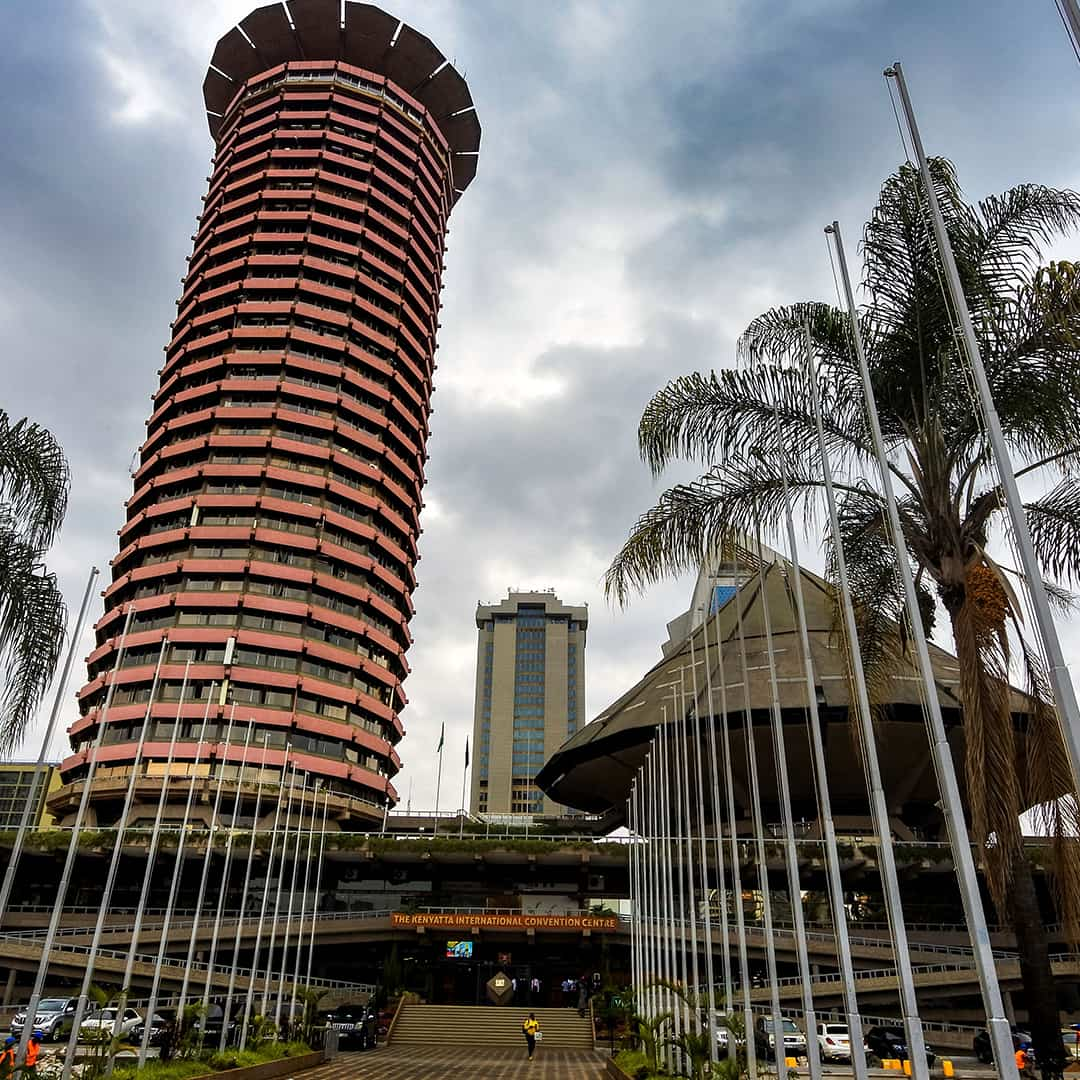Digital foundations are essential for child health equity
African countries will benefit by ensuring health workers are connected, capable, and equipped to operate within modern-day health systems.
October 22, 2025

Several years ago, I was in a rural health clinic in Zambia where a nurse showed me her phone. It was a basic device with a cracked screen. On it was a digital registry containing immunisation records for hundreds of children in her health facility’s catchment area. “This changed everything,” she told me. “Before, we lost so many children to follow-up. Now I know exactly who needs their next dose, and I can reach their mothers directly.” But then her face fell. “The problem is, half the time I have no signal to sync the data. And when I do, it takes an hour because the connection is so slow.”
This is the reality for millions of health workers across Africa. We often talk about the promise of digital health, including through telemedicine, electronic health records, and now AI-powered diagnostic interventions. But we’re missing something fundamental. We can no longer think of ‘health’ and ‘digital health’ as separate categories. Modern health systems are inherently digital. The supply chains that deliver vaccines, the surveillance systems that detect outbreaks, and the workforce management that ensures clinics are staffed all depend on digitally enabled workflows and data flowing through connected systems.
Connectivity isn’t an add-on to health systems anymore. It’s a prerequisite for health systems to function. Digital literacy is also no longer a nice-to-have skill. It’s as essential as knowing how to take a temperature or administer an injection.
The numbers tell a stark story. While internet penetration in Africa has grown, significant gaps remain, particularly in rural areas where primary health care facilities are located. Research has consistently demonstrated that access to information and communication technologies, including mobile connectivity, is increasingly becoming a key determinant for both child health and economic outcomes. The lack of reliable connectivity doesn’t kill directly but undermines everything else that saves lives: timely referrals for complicated pregnancies, clinical decision support for frontline health workers, management of last-mile supply chains, and community disease surveillance that can prevent outbreaks from becoming epidemics.
When health facilities operate disconnected, inefficiencies compound. Stock-outs of essential medicines go unreported until it’s too late. Disease outbreaks spread undetected because community surveillance data sits in paper registers or goes unreported. Health workers make clinical decisions without access to patient history or treatment protocols. Connectivity acts as a super-determinant of health. It sits beneath and amplifies the impact of every other determinant, from education to nutrition to sanitation. Without it, even well-resourced health systems operate partially blind.
But infrastructure alone solves nothing. I’ve seen well-intentioned projects that connected clinics with VSAT connectivity, only to find smartphones gathering dust because no one felt confident using them. Digital literacy is the other half of this equation, and here’s where equity really matters.
Community health workers, the backbone of primary health care in most African countries, are predominantly women living in rural areas. According to GSMA’s Mobile Gender Gap Report 2024, women in sub-Saharan Africa are 15% less likely than men to own a mobile phone and 32% less likely to use mobile internet. The gap is even wider in rural areas, where 60% of sub-Saharan Africa’s population lives.
These aren’t abstract statistics. They’re the nurses, midwives, and community health workers we’re asking to operate increasingly digitally enabled health systems. When we fail to invest in their digital capacity, particularly for rural women who face compounded barriers including lower digital literacy rates, less access to devices, and cultural barriers to technology use, we’re essentially asking them to do their jobs with one hand tied behind their backs.
The same gap exists for the children and adolescents these systems are meant to serve. Digital literacy isn’t just about navigating health information, although this matters enormously in an age of rampant misinformation. It’s about opening doors and creating opportunities. For young people across Africa, digital skills are the bridge from learning to earning. They’re the gateway to vocational training platforms, entrepreneurship resources, job markets, and skills-building opportunities that didn’t exist a generation ago. When we leave communities disconnected and digitally illiterate, we’re not just impacting their health outcomes today, we’re limiting their economic potential for tomorrow.
This is why primary health care is such a critical intervention point. PHC facilities are where the most vulnerable populations access care, where children get their first vaccines, and where families should be able to access the information and services they need. When these facilities are connected and their staff digitally capable, the ripple effects are enormous: birth registration happens in real-time and creates the foundation for unique IDs and electronic patient records, disease surveillance data gets to decision-makers in a timely manner, and referrals close the loop instead of disappearing into the void.
At UNICEF, we’ve learned that technology is the easy part. The hard part is transformation. This requires changing the way we work, updating policies and regulations, ensuring sustainable financing mechanisms, and most importantly, building government capacity to lead and maintain national digital health ecosystems. We’ve moved away from implementing isolated digital solutions toward supporting countries to build comprehensive digital health infrastructures. This means investing in interoperability standards so systems can talk to each other, championing open-source platforms that countries can own and adapt, and ensuring that equity isn’t an afterthought but the organising principle. It means supporting both digital and non-digital changes because digitally enabled health systems require reimagining how care is delivered, not just adding technology to existing (and sometimes broken) processes.
The digital divide in health isn’t inevitable. It’s a choice about where we invest, whose capacity we build, and whether we’re willing to tackle the unglamorous work of ensuring last-mile connectivity and frontline digital literacy. Every child has a right to health. In 2025, realising that right means ensuring health workers are connected, capable, and equipped to operate within modern-day health systems.
Sean Blaschke is Senior Health Specialist, Chief, Digital Health & Information Systems Unit, MNCAH Section, PG-Health at UNICEF HQ.

WHX Nairobi
Sep 2, 2026 TO Sep 4, 2026
|Nairobi, Kenya
Join us at WHX Nairobi—East Africa's #1 healthcare event. WHX Nairobi unites thousands of healthcare professionals under one roof to learn, trade, and network. It provides a platform to showcase healthcare innovations, attract investment, and position Kenya as a regional medical hub.


